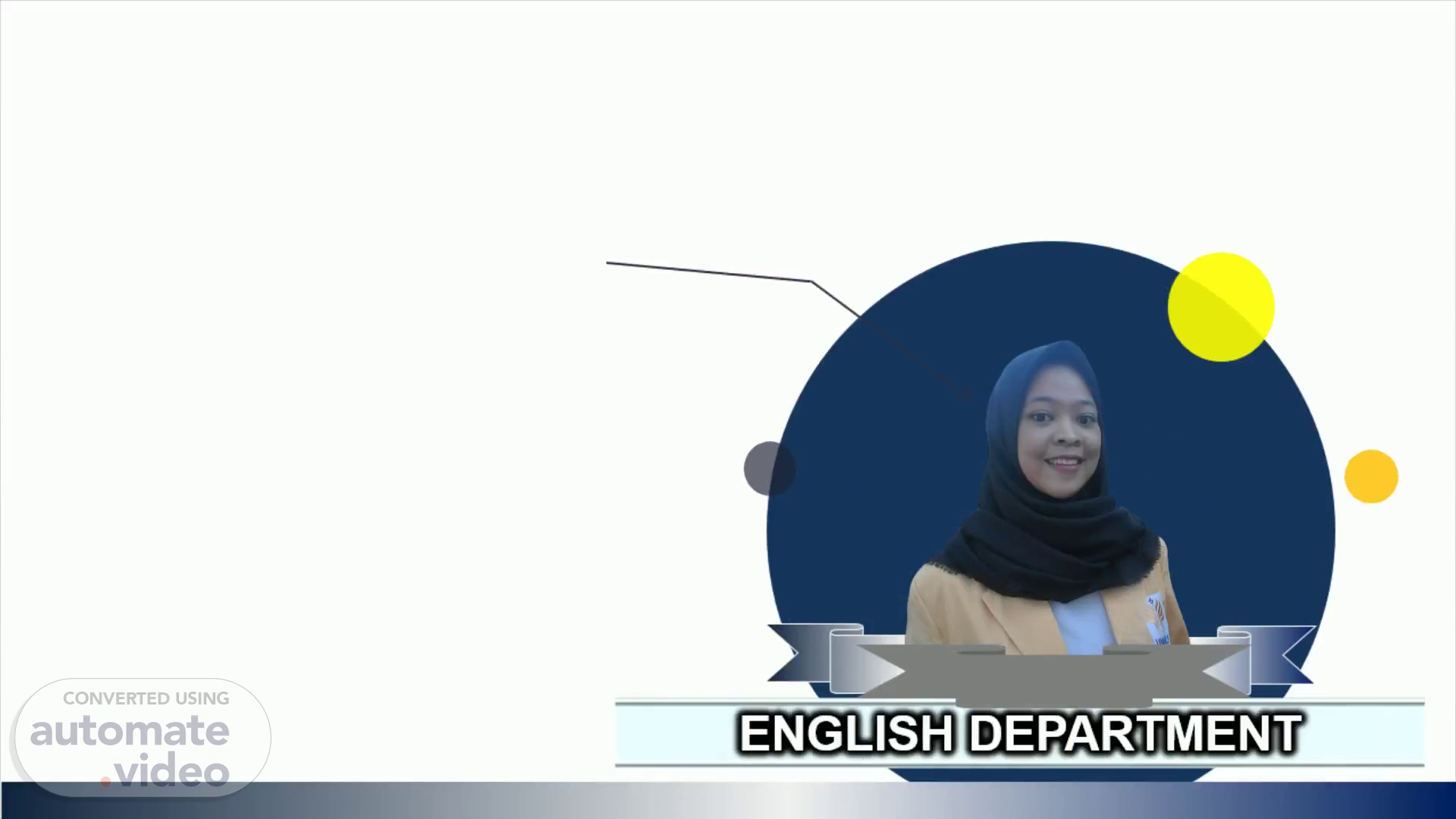
PowerPoint Presentation
Scene 1 (0s)
ENGLISH DEPARTMENT. LINDA DAWAMU ROHMATIKA. UNIVERSITAS NEGERI SEMARANG.
Scene 2 (14s)
TECHNIQUES OF TRANSLATION ON PERSONIFICATION EXPRESSIONS IN NOVEL HEART OF DARKNESS BY JOSEPH CONRAD Submitted in partial fulfillment of the requirements for the degree of Sarjana Sastra in English Literature Linda Dawamu Rohmatika 2211417013 english department faculty of languages and arts UNIVERSITAS NEGERI SEMARANG 2021.
Scene 3 (33s)
CONTENT. CHAPTER II. REVIEW RELATED LITERATURE. CHAPTER III.
Scene 4 (56s)
CHAPTER 1 . INTRODUCTION. INTRODUCTION. BACKGROUND OF THE STUDY.
Scene 5 (1m 8s)
DICT A-Z TRANSLATE. There is still little research on it.
Scene 6 (1m 22s)
1. What personification expressions are used in a novel entitled Heart of Darkness by Joseph Conrad?.
Scene 7 (1m 37s)
RESEARCH OBJECTIVES. To find out personification expressions used in a novel entitled Heart of Darkness by Joseph Conrad.
Scene 8 (1m 52s)
SIGNIFICANCE OF THE RESEARCH. Students The findings of the research can help the students to understand and translate personification from English to Indonesian in a novel..
Scene 9 (2m 18s)
CHAPTER II . REVIEW RELATED LITERATURE. Theoretical Foundation.
Scene 10 (2m 30s)
Hartono and Priyatmojo (2015) research the methods of translation applied when translating novel To Kill a Mockingbird (TKM) by Harper Lee. This study shows that the translation methods are used to translate the idioms and personification expressions..
Scene 11 (3m 17s)
Qomariah and Thahara (2015) analyze the personification translation in the novel Angels and Demons. The findings reveal that all personification translations have used 16 techniques of translation, and the quality of personification translations meets the requirements of the assessment 2,70..
Scene 12 (3m 47s)
—SPANISH ENGL UOCABUL. Wirasetia et al. (2020) conducts the study subtitled An analysis of the Subtitle of Simile and Personification in Anna Karemma (2012) movi e. Three of ten strategies are used in translating personification and simile, those are transfer, decimation, and deletion. This study results show that the dominant subtitle strategy used is transfer..
Scene 13 (4m 21s)
Translation. Zainudin and Awal (2011) conduct that translation is an activity to mediate the meaning of the source language into the target language. Catford (1965) describes translation as the process of replacing text in one language to another. Bell (1991) defines that translation is so important because it plays a role as a communication tool in the written or spoken target language. Fitria (2018) states that t ranslation is a medium for transferring knowledge or messages..
Scene 14 (4m 46s)
THEORETICAL FOUNDATION. Translation Techniques. What is Segmentation in Translation?.
Scene 15 (5m 5s)
THEORETICAL FOUNDATION. Figurative Language. What is Segmentation in Translation?.
Scene 16 (5m 25s)
THEORETICAL FOUNDATION. Personification. What is Segmentation in Translation?.
Scene 17 (5m 55s)
THEORETICAL FOUNDATION. Novel. What is Segmentation in Translation?.
Scene 18 (6m 10s)
THEORETICAL FRAMEWORK. Source Language Translator Target Language Translation Techniques ’ Molina and Albir (2002).
Scene 19 (6m 19s)
1. 2. 4. 6. 3. 5. Research Design. Research Instruments.
Scene 20 (6m 36s)
RESEARCH METHODOLOGY. D escriptive-qualitative method.
Scene 21 (6m 54s)
RESEARCH METHODOLOGY. Primary Data The primary data are taken from novel Heart of Darkness by Joseph Conrad and its translation Kegelapan Jiwa by Siska Nurrohmah . Secondary Data The secondary data are taken from e-books, books, international and national journal articles, theses, and conference papers ..
Scene 22 (7m 15s)
The researcher searched the personification expressions of the novel ..
Scene 23 (7m 30s)
Observing. Analyzing. Counting. Reporting. The researcher obtained the data by reading the novel Heart of Darkness by Joseph Conrad..
Scene 24 (8m 1s)
01. 02. FINDINGS. DISCUSSION. CHAPTER IV . FINDINGS AND DISCUSSION.
Scene 25 (8m 12s)
Adaptation Amplification Calque Compensation Discursive Creation Established Equivalent Linguistic Amplification Linguistic Compression Literal Translation Reduction Transposition Variation 5.62E-2 7.8600000000000003E-2 5.62E-2 1.12E-2 0.25840000000000002 0.1236 6.7400000000000002E-2 0.1348 7.8600000000000003E-2 5.62E-2 4.4900000000000002E-2 3.3700000000000001E-2.
Scene 26 (8m 31s)
Adaptation. Amplification. Calque. DISCUSSION. Sample.
Scene 27 (8m 56s)
Compensation. Discursive Creation. DISCUSSION. Established Equivalent.
Scene 28 (9m 20s)
Linguistic Amplification. Linguistic Compression.
Scene 29 (9m 41s)
Reduction. Transposition. DISCUSSION. Variation. Sample.
Scene 30 (10m 7s)
01. CHAPTER V. CONCLUSION AND SUGGESTION. 02. 30.
Scene 31 (10m 20s)
The total data are 98 personification expressions of the novel..
Scene 32 (11m 20s)
For the translator. SUGGESTION. “You can read other researches as a reference to explore translation techniques to create a clear translation”.
Scene 33 (11m 32s)
For further researchers. SUGGESTION. “This research is expected to support other researchers to use this research about translating literary works with the translation techniques and provide useful knowledge for subsequent related research”.
Scene 34 (11m 48s)
THANK YOU. FOR YOUR ATTENTION.